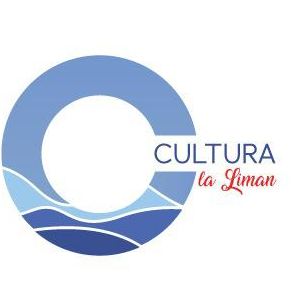- registratura@primarialimanu.ro
- Str. Castanului 32, Limanu, Jud. Constanța
- Despre noi
- Consiliul Local
- Informații de Interes Public
- Anunțuri
- Date și Formulare
- Solicitare Informații – Legea 544/2001
- Buget
- Bilanțuri Contabile
- Achiziții Publice
- Proiecte Locale
- Declarații de Avere și Interese
- Transparență Decizională
- Integritatea Instituțională
- Registrul de Evidență a Sistemelor Individuale Adecvate pentru Colectarea și Epurarea Apelor Uzate
- Alegeri Locale
- Comuna Limanu
- Monitorul Oficial Local
- Cultura la Liman
- Proiecte PNRR
- Înființarea unui Centru de colectare prin aport voluntar – Comuna Limanu
- Asigurarea infrastructurii pentru transportul verde – Pistă de biciclete – Comuna Limanu
- Sistem de monitorizare și supraveghere video a spațiului public – Comuna Limanu
- Dotarea cu mobilier, materiale didactice și echipamente digitale a unităților de învățământ preuniversitar – Comuna Limanu
- Fondul pentru modernizare
- Proiecte POR
- Contact
- Program colectare deșeuri
- 2025 – Alegeri Locale Parțiale, Prezidențiale
- Despre noi
- Consiliul Local
- Informații de Interes Public
- Anunțuri
- Date și Formulare
- Solicitare Informații – Legea 544/2001
- Buget
- Bilanțuri Contabile
- Achiziții Publice
- Proiecte Locale
- Declarații de Avere și Interese
- Transparență Decizională
- Integritatea Instituțională
- Registrul de Evidență a Sistemelor Individuale Adecvate pentru Colectarea și Epurarea Apelor Uzate
- Alegeri Locale
- Comuna Limanu
- Monitorul Oficial Local
- Cultura la Liman
- Proiecte PNRR
- Înființarea unui Centru de colectare prin aport voluntar – Comuna Limanu
- Asigurarea infrastructurii pentru transportul verde – Pistă de biciclete – Comuna Limanu
- Sistem de monitorizare și supraveghere video a spațiului public – Comuna Limanu
- Dotarea cu mobilier, materiale didactice și echipamente digitale a unităților de învățământ preuniversitar – Comuna Limanu
- Fondul pentru modernizare
- Proiecte POR
- Contact
- Program colectare deșeuri
- 2025 – Alegeri Locale Parțiale, Prezidențiale
Despre program
- Home
- Cultura la Liman
- Despre program

Comuna Limanu și-a dorit să focalizeze atenția pe o zonă trecută cu vederea în domeniul culturii: a gândit un proiect care să „scrie” povești ce schimbă oamenii și, prin ei, locurile. A oferit un spațiu amplu de desfășurare pentru fenomene culturale cu o structură solidă și un scop clar: acela al întâlnirii, al comunicării și al dialogului între comunitate, public și artiști.
„Cultura la Liman”, programul cultural anual al Comunei Limanu, investește în politici și programe care susțin comunități ce lucrează și creează împreună, pentru ca actul lor creator să devină principalul vector de promovare și dezvoltare economică și socială a unor localități care înseamnă mai decât o destinaţie de week-end, de sezon estival sau de noapte albă. Festivalul a devenit gazda unor evenimente din diverse arii de expresie artistică, recunoscute ca valoare și unite într-un sincretism care își propune să evite superficialitatea unui „spectacol” generic de vară, de petrecere a timpului liber la malul mării.
„Cultura la Liman” se desfășoară la 2 Mai, pe parcursul întregii veri. Cuprinde zeci de evenimente culturale cu intrare liberă şi are ca invitaţi sute de artişti din România. Grupate în mai multe secţiuni – vernisaje și expoziții de fotografie, concerte cu muzică de diverse genuri, teatru, film, târg de carte cu lansări, recitaluri de poezie și lecturi publice, competiții sportive, evenimentele sunt astfel structurate încât să aducă împreună iubitori de artă de toate vârstele și artiști tineri sau consacrați, oferindu-le spațiul atât de necesar prezentării creațiilor proprii, precum și șansa întâlnirii și a dialogului cu nume importante din spațiul cultural autohton.
„Îmi doresc pentru Limanu, 2 Mai, Vama Veche și Hagieni să devină un brand cultural și turistic pentru Dobrogea de Sud, la nivel național și internațional. Cultura la Liman crește și s-a impus ca „vara culturală din Doimai”. Este un proiect pentru revitalizarea patrimoniului cultural românesc din această parte a Dobrogei și porneşte de la convingerea noastră, a autorităților locale și a specialiştilor și actorilor culturali implicaţi cu profesionalism şi entuziasm în derularea sa, că acest ținut este unic. Cred că aceste locuri au nevoie de oameni care să le înţeleagă şi să le iubească cu adevărat și să le transforme într-un spaţiu de creaţie, un adevărat curent artistic, cu putere de şcoală”, declară Daniel Georgescu, primarul Comunei Limanu, inițiatorul programului.
Notă: Informaţii protejate de către dispoziţiile legale incidente. Preluarea de informaţii de către persoane/publicaţii/site-uri
web/legate etc. poate fi făcută numai în acord cu termenii agreaţi de către Clubul Român de Presă. În mod obligatoriu, în
aceste cazuri, trebuie citată sursa informaţiei.
- Str. Castanului 32, Limanu, Constanța, România
- +40 241 858 204
- registratura@primarialimanu.ro


